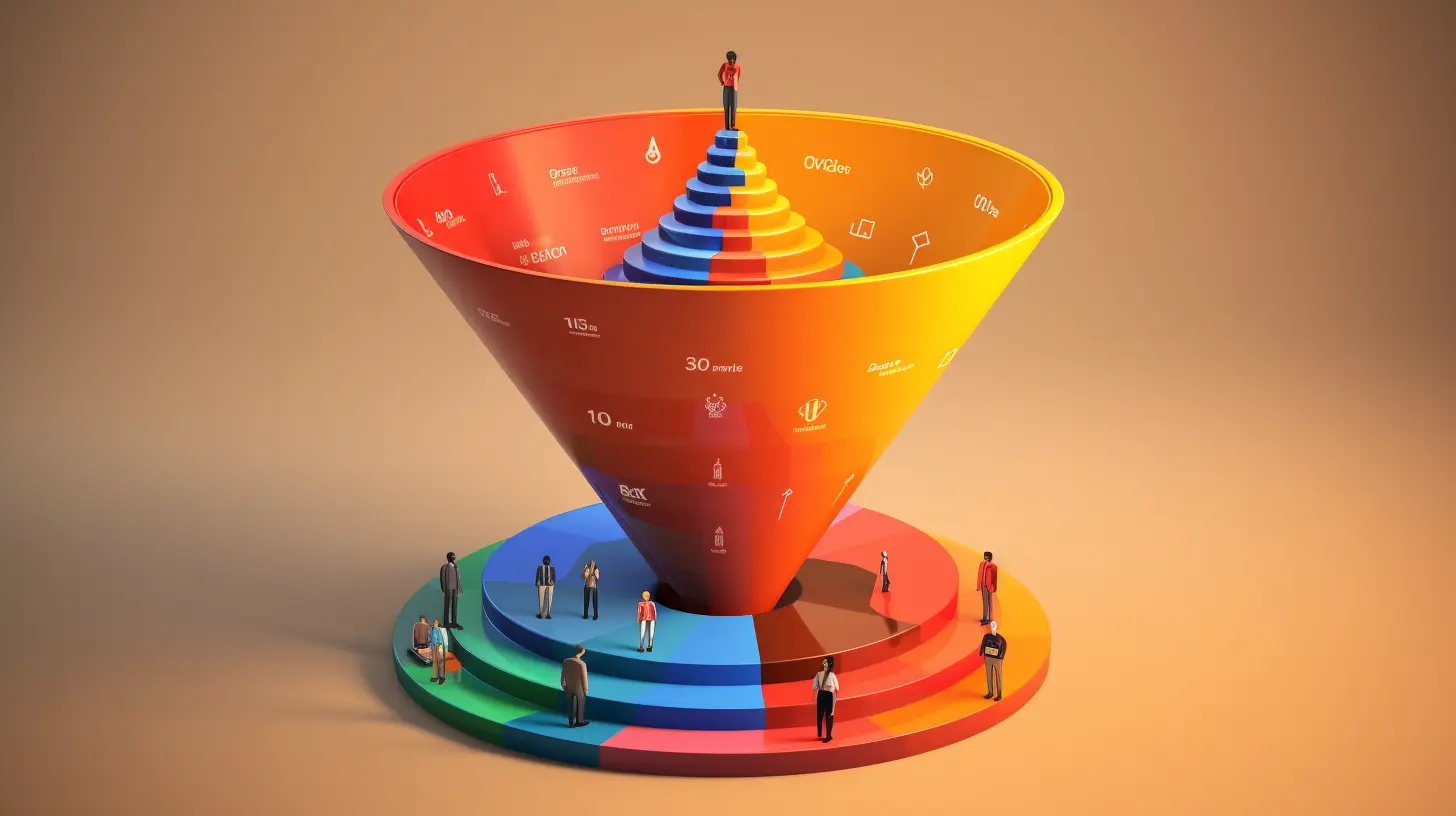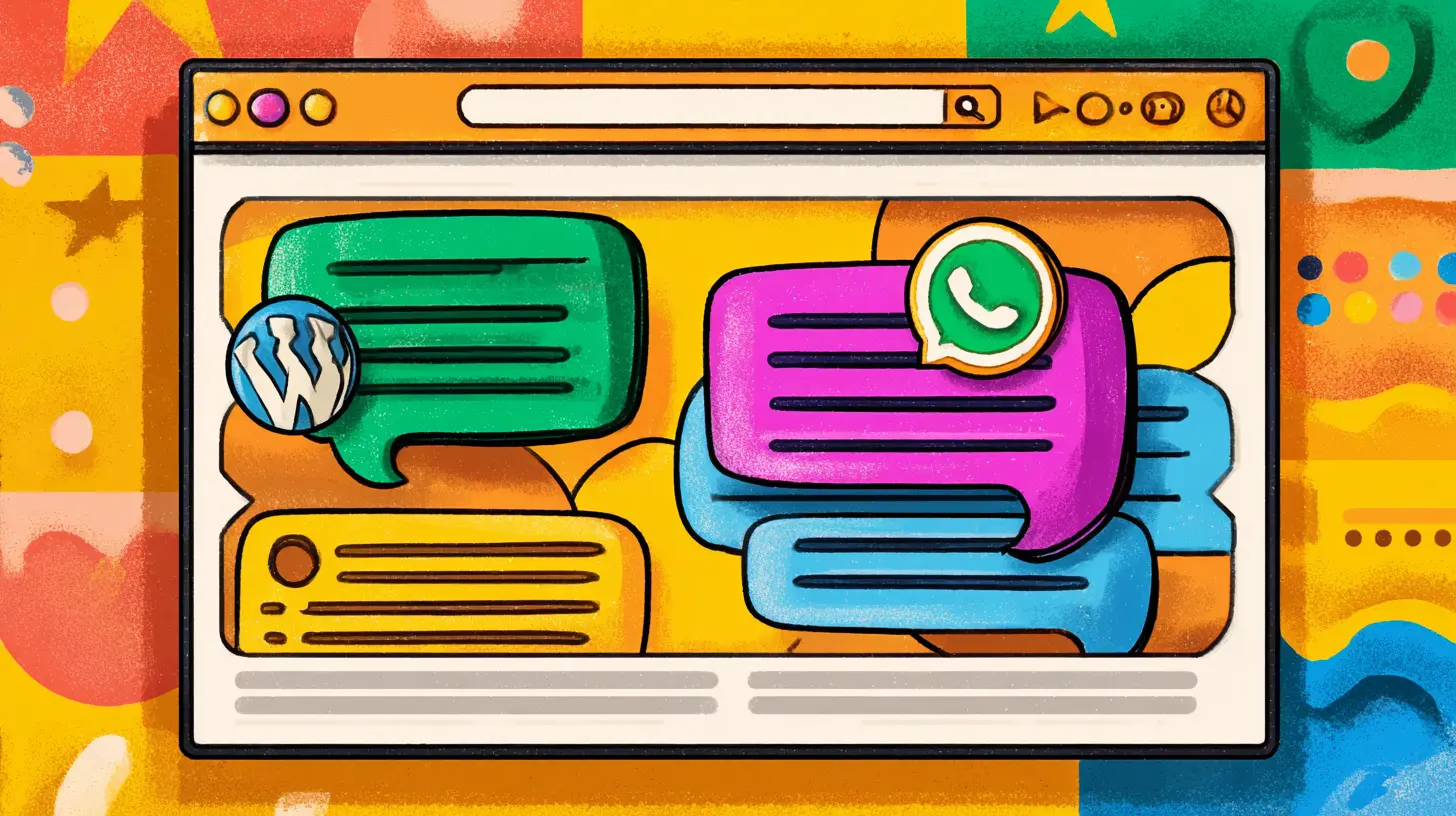Demand Gen vs. Lead Gen: Maximize results & Differences
Digital Consultant
Oct 14, 2023 · 9 min read


Looking to boost your business's growth? Understanding the difference between demand generation and lead generation is key.
In this blog post, we'll dive into the nuances of each strategy, helping you determine which one is the best fit for your company's unique needs.
Demand gen focuses on creating awareness and generating interest in your product or service, while lead generation focuses on capturing and nurturing potential customers.
Demand generation activities include content marketing, b2b social media advertising, and events to attract a wide audience, whereas lead generation tactics involve forms, landing pages, and email marketing to collect contact information from interested prospects.
Demand generation is a long-term strategy that aims to build brand credibility and trust, while lead generation is a more immediate tactic to identify and qualify potential customers.
Both demand generation and lead generation are important components of a successful marketing strategy, as they work together to attract, engage, and convert prospects into customers.
To maximize results, businesses should integrate their demand generation campaign and lead generation efforts, using data and analytics to measure the effectiveness of each strategy and make informed decisions for optimization.
Demand generation refers to the process of creating awareness, generating interest, and driving customer engagement for a product or service.
It plays a crucial role in attracting potential customers and nurturing them through the sales funnel.
Demand generation strategies involve a combination of marketing activities aimed at building brand visibility, educating the target audience, and ultimately, generating demand for the offerings.
These strategies may include content marketing, social media marketing, email marketing, search engine optimization (SEO), and paid advertising, among others.
By utilizing these tactics, businesses can effectively reach their target audience, build credibility, and create a demand for their products or services.
To learn more about demand generation and its importance in the marketing landscape, visit Wikipedia.
Lead generation is a crucial aspect of any successful marketing strategy.
It refers to the process of capturing potential customer information and converting them into leads, who have shown interest in a company's products or services.
The primary goal of lead generation is to attract and engage with the right audience, nurturing them towards becoming paying customers.
Various techniques are employed to achieve this, such as gated content, where valuable resources like ebooks or whitepapers are offered in exchange for contact information.
Webinars also serve as an effective lead generation tool, allowing businesses to showcase their expertise and capture leads during registration.
Additionally, landing pages play a significant role in lead generation, providing a dedicated space for customers to provide their information in exchange for a specific offer or promotion.
To learn more about lead generation, visit websites like Wikipedia for additional insights.
Demand generation and lead generation are two essential strategies that businesses use to drive growth and increase revenue.
While they may seem similar, there are key differences between the two approaches.
Demand generation is all about creating awareness and generating interest in a product or service.
It aims to nurture potential customers and build long-term relationships.
On the other hand, lead generation is more focused on capturing and qualifying leads, with the ultimate goal of converting them into paying customers.
It involves identifying individuals who have expressed interest in a product or service and gathering their contact information for further nurturing.
To better understand these concepts, think of demand generation as the initial spark that ignites interest, while lead generation is the process of harnessing that interest and turning it into actionable leads.
Demand generation and lead generation are two essential components of any successful marketing strategy.
While they may seem like separate concepts, they actually work hand in hand to drive business growth.
Demand generation focuses on creating awareness and interest in a product or service, while lead generation involves capturing and nurturing potential customers.
By implementing effective demand generation strategies, businesses can fuel their lead generation efforts, resulting in increased conversion rates and overall business growth.
When businesses invest in demand generation, they are essentially creating a pool of potential leads.
Through various marketing activities such as content creation, social media engagement, and email marketing, they generate interest and attract prospects to their brand.
These prospects, in turn, become leads that can be further nurtured and converted into customers.
Effective demand generation strategies also help in building brand credibility and trust.
By consistently delivering valuable content and engaging with their target audience, businesses establish themselves as industry leaders and gain the trust of potential customers.
This trust plays a crucial role in the lead generation process, as prospects are more likely to engage with a brand they perceive as credible and trustworthy.
Furthermore, demand generation efforts can provide valuable insights into customer preferences and behaviors.
By analyzing the data gathered from various marketing activities, businesses can gain a deeper understanding of their target audience.
This knowledge can then be used to optimize lead generation efforts, tailoring messaging and offers to better resonate with potential customers.
Ultimately, the symbiotic relationship between demand generation and lead generation is essential for business success.
Effective demand generation strategies not only create awareness and interest in a product or service but also fuel lead generation efforts, resulting in increased conversion rates and overall business growth.
So, it's crucial for businesses to invest in both demand generation and lead generation to maximize their marketing efforts and drive long-term success.
When it comes to incorporating demand generation and lead generation into customer chat, there are several practical tips to consider.
First and foremost, personalized interactions play a crucial role in engaging potential customers.
Take the time to understand their needs and preferences, and tailor your responses accordingly.
Proactively engaging with customers is also key, as it demonstrates your commitment to providing exceptional service.
By initiating conversations and offering helpful information, you can showcase your expertise and build trust.
Additionally, implementing effective lead capture techniques is essential for maximizing the potential of customer chat.
Utilize features like chatbots or live chat forms to collect contact information and qualify leads.
Remember, the ultimate goal is to generate demand while simultaneously capturing valuable leads.
The key difference is in the focus. Lead generation aims to capture individual leads for immediate follow-up, usually by the sales team. It's more transactional and often involves lead gen forms. On the other hand, demand generation is about building awareness and interest in your product or service to create market demand. It's more about long-term relationships and often involves content marketing strategies.
In the context of B2B marketing, demand generation is a long-term strategy focused on educating your target market and building brand awareness. Lead generation, however, is more tactical and aims to quickly provide the sales team with leads for conversion. The two often work hand in hand but serve different stages of the customer journey.
Content marketing plays a crucial role in both. In demand generation, the content is educational and aims to nurture potential customers who might not yet be ready to buy. In lead generation, the content is more direct and designed to capture and convert. As for costs, demand generation often requires a larger upfront investment with a focus on long-term ROI, while lead generation usually aims for quick wins and may be more cost-effective in the short term.
Demand generation and lead generation are closely intertwined and work hand in hand to drive business growth.
Demand generation creates awareness and generates interest in your offerings, attracting a wide audience to your brand.
Through various marketing activities, you can educate and engage potential customers, nurturing them along their buyer's journey.
As a result, you build a pipeline of interested prospects who may eventually become leads.
Lead generation takes the interest generated by demand generation and converts it into tangible leads.
By capturing potential customers' information, you can start building relationships and personalized communication with them.
This allows you to nurture leads further and guide them through the sales funnel, increasing the chances of conversion.
In summary, demand generation creates the initial interest, while lead generation captures and nurtures that interest to convert prospects into customers.
Both demand generation and lead generation are crucial for a successful marketing strategy.
However, their importance may vary depending on your business goals and priorities.
Demand generation is particularly important for businesses that want to create brand awareness, establish thought leadership, and attract a wide audience.
It focuses on generating interest and educating potential customers about your offerings.
Effective demand generation strategies can help you build a strong brand presence and create a steady stream of potential leads.
Lead generation, on the other hand, is essential for businesses that prioritize converting interested prospects into paying customers.
By capturing lead information, you can personalize your marketing and sales efforts, increasing the chances of conversion.
Generating high-quality leads ensures a more targeted approach to sales and marketing, leading to better conversion rates and revenue growth.
Ultimately, both demand generation and lead generation work together to drive business growth.
The importance of each will depend on your specific business objectives and the stage of your sales funnel.
Content marketing is the backbone of both successful demand generation and lead generation campaigns. In demand generation, content focuses on educating the target market, often via inbound marketing strategies. It aims to build brand awareness and move potential customers down the funnel. On the flip side, lead generation content is more transactional and designed to convert visitors into leads at the top of the funnel.
In B2B marketing, demand gen is often a multi-touch, long-term strategy that may involve webinars, eBooks, and educational content. The focus is on educating potential clients and building relationships. Lead gen in B2B is more immediate, often involving tactics like cold outreach, pay-per-click ads, or lead gen forms to quickly capture business leads for the sales team.
Demand generation content focuses on educating and nurturing the audience. It’s usually broader and aims to answer questions that potential customers might have before they're ready to make a purchase. Lead generation content, however, is typically more direct and aimed at capturing and converting leads. This often involves a specific call-to-action and may focus on the immediate benefits and features of a product or service.
In conclusion, while demand generation and lead generation are closely related, they serve different purposes in the customer acquisition process.
Demand generation focuses on creating awareness and generating interest in a product or service, while lead generation focuses on identifying and capturing potential customers.
Both strategies are essential for successful sales and marketing efforts, and understanding the difference between them is crucial for businesses looking to maximize their customer outreach and conversions.

Article by
Ruben is the founder of Boei, with 12+ years of experience in conversion optimization. Former IT consultant at Ernst & Young and Accenture, where he helped product teams at Shell, ING, Rabobank, Aegon, NN, and AirFrance/KLM optimize their digital experiences. Now building tools to help businesses convert more website visitors into customers.
Get 30% more conversations and effortlessly convert them into customers.
Don't wait, experience it for free yourself!
URL
Trusted by 10,000+ businesses
Quick 5-min, no code setup

Discover effective lead capture strategies tailored for small and medium-sized businesses. Learn how to overcome common challenges in lead generation with actionable tips and industry insights to boost your conversion rates.

Build a lead generation funnel that converts 3x better. Simple 6-step guide with examples, tools, and AI tips to turn visitors into customers.

Compare the 7 best AI chatbots for customer service in 2026. Detailed reviews, pricing, features, and expert recommendations to help you choose the perfect automated support solution for your business.